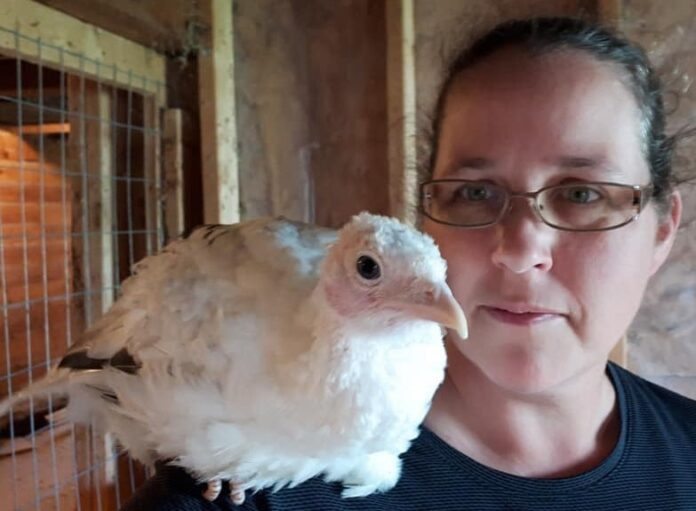Jen Pretty really loves raising her Heritage Turkeys. She also writes popular urban fantasy books, with series such as Alexandra Everest, Goddess Durga , Harlow’s Demons, and Origins of Morgana Le Fay. And she shoes horses…..but today we’re talking turkeys! She has just published How to Train Your Turkey: Pro Tips for Raising Healthy, Happy and Friendly Pet Turkeys.
Jen got into Heritage Turkeys after a year of raising some Broad Breasted Commercial turkeys. She loved how friendly and curious they were. These commercial turkeys have been bred specifically for characteristics desired by the commercial food market. They cannot reproduce naturally, and by five months they usually have heart and limb problems. She did some research, and came across Heritage Turkeys. She started out with some Royal Palm turkey eggs, and had a friend hatch them for her. They were even more friendly than the commercial ones she’d raised the previous year… and they could fly!
More research led to more turkeys, and twelve years later, she has a barn filled with many different varieties. Her interest came at an opportune time, for initially her farm, Aspen Creek Farm, was a horse farm. Jen is a farrier, and her horse farm was quite successful until Kemptville College closed. She changed with the times.
A heritage turkey retains all of the characteristics of its wild relatives, but has been bred to be docile and calm, and have a much smaller home range. The wild turkey we know now in Ontario has a huge range. There is really only one breed of turkey, with several varieties recognised by the American Poultry Association (APA). There has to be enough genetic diversity to ensure the survival of the breed. Without committed breeders, the heritage turkey will disappear.
 Within the breed, there are different varieties, mostly based on colour. Some have slight differences in size, such as the smaller Royal Palm, the only variety intended solely as an ornamental bird. New varieties are always being developed, although the APA is slow to recognise them. The APA recognises 8 varieties, but there are more than 40. Some of the varieties aren’t available in North America. The recessive slate was recently imported, and some European varieties are as small as chickens. There is a lot of interest in studying the genetics behind the different colours.
Within the breed, there are different varieties, mostly based on colour. Some have slight differences in size, such as the smaller Royal Palm, the only variety intended solely as an ornamental bird. New varieties are always being developed, although the APA is slow to recognise them. The APA recognises 8 varieties, but there are more than 40. Some of the varieties aren’t available in North America. The recessive slate was recently imported, and some European varieties are as small as chickens. There is a lot of interest in studying the genetics behind the different colours.
Each spring, Jen ships eggs for hatching all over the country. She sells poults and young turkeys locally. Turkey eggs are edible, although higher in cholesterol than duck or chicken eggs. Most heritage turkeys are bought for eggs and breeding, or for dinner.
There is a Standard of Perfection book for poultry, produced by the APA. This standard for the turkey hasn’t changed much since the first book, dated 1874. The standard varieties such as Bronze, Spanish Black, Narragansett, Bourbon Red, and White Holland, were all used to create the Broad Breasted turkey produced today.
Jen’s favourite part of breeding heritage turkeys is raising and hatching the almost 1000 poults each spring. Even with all her turkey experience, there are even more varieties that she would love to have. You can reach Jen, breeder of heritage turkeys, and farrier, at: aspen.creek@live.com.
You can reach Jen, author of urban fantasy and How to Train Your Turkey, at: jenprettyauthor.com

